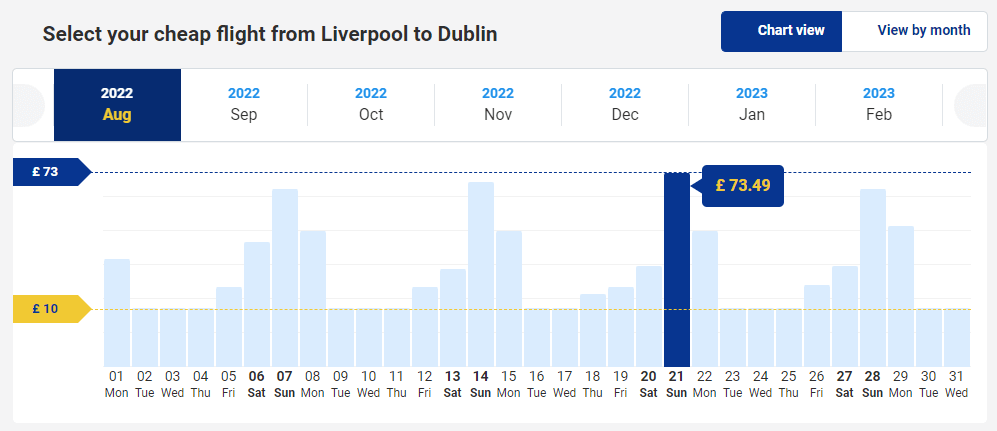The pricing of a product is one aspect that can have dramatic effects on profit.
According to Shopify’s Future of Commerce Report 2022, 74% of consumers are influenced by price when making a purchase decision.
So, what price should you charge for your products?
The pricing strategies of brands in ecommerce marketplaces can be extremely individualised and unique to each business.
Many elements determine the right approach, including what you sell, how much margins there are in those items, and how those margins compare to other retailers within your niche, as well as your product mix, margins, target market, and competitive environment.
This blog post will explore various pricing strategies applicable for ecommerce and how brands can use those strategies to achieve their strategic business goals.
So, let’s get going and discuss some of the most effective pricing strategies for ecommerce businesses.

Types of Ecommerce Pricing Strategy
For your ecommerce business, having the right pricing strategy can make all the difference between success and failure.
Among all the available options, it takes a lot of time and effort to figure out which best suits your needs as it has a direct influence on customer behaviour.
Price Anchoring
Ecommerce businesses often use price anchoring as a pricing strategy.
Price anchoring, or baselining, involves setting your product or service's price against a similar, higher-priced product or service.
In the case of a £20 tech accessory, for example, you might price it at £17, which is just £3 less than your competition.
With this pricing strategy, your product is perceived as being a better value by consumers, even if it's just a few pounds cheaper than the competition.
One benefit of implementing this strategy is that it can be an effective pricing strategy, but it's vital to use it sparingly, as overuse can damage your brand and harm your margins.
Penetration Pricing
Penetration pricing is a pricing strategy in which you set a low price for your product or service to attract customers and gain market share.
Once you've established a customer base, you can then gradually increase prices over time.
This pricing strategy is often used by new businesses to gain a foothold in their market.
Think of this scenario where: a new bookstore opens in the shopping mall and offers books that are 30% cheaper than any other stores in the area.
This market penetration strategy allows the bookstore to gain new customers rapidly and generate buzz while sacrificing profits.
In other words, this is more of a tactical approach - applied in the short-term to gain new customers and then convert them into loyal customers over the long-term.
Pricing Bundling
We have all seen this upsell strategy being used whenever we go online to buy products.
For example, if you are buying a smartphone, you will be provided with add-on products that complement the smartphone - such as a tempered glass screen guard, protective phone case, extended warranty plan etc.
If these products and services are bought individually it always costs more compared to the customer buying all these items bundled together.
Price bundling strategy offers a discount for buying multiple products or services together.

The purpose of this pricing strategy is typically to increase the perceived value of your product or service, as well as to boost sales.
In addition to upselling other products to customers, bundling adds value to their purchase.
Traditionally we have seen restaurants, beauty salons, and retail stores are among the many businesses that apply this strategy.
It is important to make sure that the products or services you are bundling are complementary and add value for your customers.
Otherwise, it will lead to lower conversion and sales and increase customer’s frustration with the choices being offered to them.
Price Skimming or “hi-lo” Pricing
Pricing your product/service at a high price to maximise profits is known as skimming.
If you have little or no competition, or if you have a niche market for your product or service, this pricing strategy may be used.
The practice of charging maximum prices for new products and gradually reducing them over time is known as price skimming.
Prices drop when products reach the end of their life cycles and become less relevant.
In ecommerce, we see this a lot when newer models of consumer electronics like smartphones or televisions arrive in the market.
The newer products are priced higher than usual while the older products are sold at a deep discount to liquidate the excess inventory.
This pricing strategy works well when the product is utterly unique or novel and provides value for your customers.
Pricing Loss Leader
Using a loss leader pricing strategy, companies sell a product or service at a loss to attract customers.
As soon as you have set up a customer base, you can upsell and cross-sell them on other profitable products or services.
In this case, if a productivity tool is £50, you may price it at £25, resulting in a £25 loss. You may also offer an upsell to a £100 video course.
You can use this pricing strategy if the product or service you're selling at a loss is valuable to your customers.
Dynamic Pricing
It is a basic economic principle that when supply outstrips demand, prices drop.
Dynamic pricing is based on this concept, where prices are constantly changing in response to market conditions.
For example, if demand for your product or service is high, you might raise prices to maximise profits.
Similarly, if demand is low, you might lower prices to attract customers.
This is especially true for hotels, airlines, events and even ride share services like Uber who raise prices based on demand.

Despite the effectiveness of this strategy, brands should be aware of the risk of price gouging, which can damage their reputation and alienate their customers.
Also, since dynamic pricing requires complex calculations, it might be prohibitively expensive and time-consuming for small businesses to use this strategy.
Value Based Pricing
With value-based pricing, the market decides the price of a product or service by determining how valuable it is perceived to be.
Consider factors like the features and benefits of your product or service, as well as its quality.
It is certainly possible to price a £50 e-book at £100 if you believe it will provide your customers with £100 of value.
A pricing strategy like this can be successful, but it's important to make sure that the prices are in line with what the customers perceive the product or service to be worth.
Cost Plus Pricing
Cost plus pricing is a simpler pricing strategy in which you set prices based on the costs of producing your product or service.
For example, if it costs you £30 to produce a gadget, you might price it at £40 – a £10 profit.
The final price of your product is decided by taking the total cost of making the product and adding a certain percentage markup on top of that.
Although it gives a more direct visibility into profits it does not capture a lot of external factors like competitor's pricing, demand, customer sentiments, brand image etc.
Related: Check out our guide to ecommerce business models.
Premium Pricing
It is a pricing strategy in which you set high prices for products that have superior quality, high value, or high luxury.
Brand awareness and positive brand perception make customers willing to pay a premium price.
Although profit margins are higher with this strategy, it is still dependent on the customer's perceived value of the product to succeed as a premium product or service.
We see many examples of premium pricing strategies - mostly in high fashion, luxury cars, jewellery, technology, and even in the hospitality sector.
Competition-Based Pricing
Competitive pricing involves setting a product's price based on the competition. Instead of focusing on the initial costs, the focus is on how the competition is pricing their products.
It focuses more on how competitors decide their segmentation, price, and unique selling proposition, product design, and marketing cues, and then retrace their steps to formulate their own pricing.
Pepsi and Coca Cola are two classic examples of competitor-based pricing as their products are similar in value, quality and features, and hence are priced similarly to each other.
Psychological Pricing
Pricing can be used strategically to influence a customer's spending or shopping habits, resulting in more or higher value sales.
In this pricing strategy, prices are set lower than a whole number - for example: £1.99 instead of £2.00.
The idea behind psychological pricing is that customers will read the slightly lowered price and treat it lower than the price actually is.
This type of pricing strategy is so incredibly common in the western world that to most people it will be completely ubiquitous in consumer settings.
Thomas and Morwitz's "left-digit effect" was the basis for psychological pricing theory.
How to determine your Pricing Strategy
When it comes to pricing strategies for ecommerce, there is no one size fits all solution.
The best way to find the right price point for your products is to evaluate and track different pricing options using A/B tests.
There are a few different pricing strategies you can test:
- Starting price: what is the lowest price you can charge and still make a profit
- Promotional pricing: offering discounts or running sales to drive traffic and conversions
- Price anchoring: using high-priced items to make your other products seem more affordable in comparison
To run an effective A/B test for ecommerce, you will need to track some key metrics, such as conversion rates, average order value, and click-through rates.
By comparing these metrics across different pricing options, you can start to see which pricing strategy is the most effective for your business.
Conclusion
Today's shoppers are no doubt sophisticated, as they have many ways to research, compare and evaluate products before they make a purchase.
When a price isn't good enough, they'll simply look elsewhere if they can get something better for less.
That is why pricing is one of the most important aspects of any ecommerce business.
Get it wrong, and you could be losing out on a lot of potential revenue.
But get it right, and you could see your sales figures skyrocket.
To put this immense opportunity into perspective, global retail e-commerce sales surpassed 4.9 trillion dollars in 2021.
Over the next four years, this number is expected to grow by half, reaching about 7.4 trillion dollars by 2025.
An effective pricing strategy is essential if you want to succeed in this massive ecommerce market. To be competitive and make a profit, you must strike a balance.
What do you think? Are any of these techniques something you would like to try in your own business? Tweet us at @SearchCandy – we would love to hear from you.
